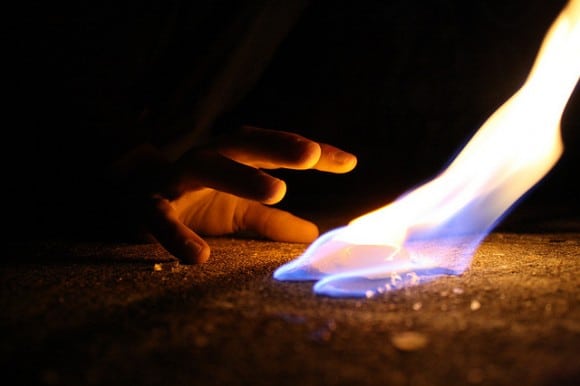I recently finished reading the Nobel Prize winner José Saramago’s Death with Interruptions. It fascinated me in countless ways: the style uniqueness, easy flow, ideas represented, underlying themes, references.
What’s so special about it? Well, it’s an allegorical story about what could happen if people suddenly stopped dying. Straight and simple, and yet complicated.
It's been some time since I last read an allegory by a modern author. Have you noticed that writers stopped writing them as much?
Perhaps the explanation for this lies in that earlier writers had to mask their ideas under metaphorical and allegorical representation because of the harsh government regimes. Maybe exactly this limitation made them more creative? Food for thought, for sure.
As for allegory, it is a literary genre concerned about principals and ideas represented abstractly. So how do you go about it? Consider these basic steps towards writing one:
1. It’s All Symbolic
An allegory is a symbol of your idea. What this means in practice is that your story is just a cover-up for the theme you’re representing; a surface story for the primary one.
This gives you huge freedom in how you decide to represent your topic. It can be fantastical or very down-to-earth, eccentric or with everyday characters – completely your choice. You can set your story in New York, implying the life in any metropolitan city around the world.
2. Carefully Plan Your Characters
Each character in an allegory serves to represent an underlying element to your theme; an archetype if you will. This means that you need to have a reason for introducing a character or a figure, since the reader is expected to interpret the whole story and find what it means.
The same holds for the whole action that happens in the story. It should indicate something, not just push the story forward.
3. Leave Clues
Not underestimating your readers or anything, but you’ll be expected to leave clues in your story for easier grasping. Some use irony; others metaphors and various references. They can be subtle clues; no need to explain yourself, just make sure they’re there to be found.
The distinctive characteristic about allegories is that they have a universal application; a collective human issue represented through a unique story. Very literary, indeed.
Do you find allegories interesting? What tips do you have for writing one?
PRACTICE
For fifteen minutes write allegorically about anything. It can be about human’s permanent incomprehension of the devastation of war, about the trickiness of love or any topic you’re passionate about. How will you represent this idea in a story in a cover-up fashion?
When you’re done, post your practice in the comments. As usual, support others’ practices.








Sophie, what a well-timed post. I happen to be a great fan of allegories, and share your sentiments that we just don’t see them as much any more, perhaps because we now have, at least technically, so much “freedom of speech”. Cuban music is rich with double and sometimes triple meaning precisely because they are so repressed and cannot express their feelings and thoughts publicly. I know a thing or two about that… I was born in the Czech Republic.
Curious that you should post this, too, because my own latest work is in fact an allegory. It’s called “The Seventh Crane” and it’s an allegory about the importance of appreciating your life in its totality regardless of your age, not just the day-to-day, short-term horizon that we tend to view it from.
What tips do I have for writing allegories: to the three points you’ve listed, I would add that your narrative needs to have a double life, or double purpose if you will. One is the literal narrative, the plot, while the other is the symbolical, metaphorical meaning. In “The Seventh Crane,” for example, the surface narrative recounts a young woman’s relationship with cranes as she grows up. But the allegorical narrative expands into a much deeper story, which the reader is invited to recount in his or her own words….
Sounds interesting, Birgitte!
I grew up with Bunyan’s Pilgrims Progress. Like you say you don’t see much of them any more.
Thanks for reminding me of this amazing book. Time I read it again. 🙂
Thanks Birgitte! The Seventh Crane sounds like a good story; I wonder what’s the meanung in the allegorical narrative. Great tips too! Maybe we should try and repopularize the allegories as a genre today. 🙂
Sophie,
Well, without giving away the story…. here’s the beginning:
At touch of first light, blades of sea grass whistled in the early breeze. They had waited all night for the sun, and so had the Crane. Too large to catch the small nimble fish frisking her legs, she preferred to nip dragonflies in mid-flight or crack a fresh mollusk. Dawn had just broken, and the Crane was alone. She was, after all, always the first one there. Breakfast would be abundant—and easy.
But there was someone else. A child, perhaps a little more than one year of age, sat by the water’s edge. She watched the Crane, little fingers sifting sand. A dragonfly alighted on the child’s knee, and she grabbed for it clumsily, missing. It sped off, straight into the bird’s beak. The Crane and the child watched each other quietly, waves lapping against their feet.
“Lovely of you,” said the mother to the father a little further away. “Baby’s first breakfast on the beach.” She leaned to kiss him over finger omelettes, slices of brie and warm bread, and a baby bottle laid out between them. The father smiled and stroked his wife’s hair away from her face.
“Look at that great big crane,” she said. “Have you ever seen one so big around here?”
“Mm-mm.” He reached for his camera. Perfect shot of his baby with a crane against the steel-cut blue of the bay. He’ll feature it in the exhibit next month.
The Crane picked up a tiny crab by its claw, the little creature wriggling in protest. The child let out a peal of delight.
————-
p.s. I would definitely be up for the challenge of repopularizing allegories. Send me a note and let’s talk! info@birgitterasine.com
I’ll get in touch very soon. 🙂
Furbert blinked in the hot sun. He absentmindedly scratched his long ear with a back claw. He hopped to the nearest dandelion and took a big sniff. Its stem was tender and sweet. He crunched and munched. A sound drew his attention. Laughter. He hopped to the edge of his yard. He peered out from behind the fence.
“I AM A ROBOT” pronounced a brown-haired boy, his arms stiff, his knees rigid. “No, no, I know how to be a robot!” squealed his blond-haired friend, grabbing the first boy’s arm. In a tangle of arms and legs and giggle, both boys hopped through the sprinkler, reveling in their last day of summer. Furbert hopped across his garden path and thought about how good he was at hopping.
Very interesting. I’m puzzled. 🙂
Furbert is a lonely rabbit. 🙂
And also, thank you, Sophie. This is a great topic!
The rain had stopped during the night. Chad wrapped the blanket round his shoulders and hurried to the stream running outside. In the dim light the water was still clear. Ina few minutes the others in the camp would be up, and the water would change colour as they went about their ablutions. A quick scoop with a battered aluminium pot and he had his breakfast warming over the little wooden fire going in the corner of his hut.
When he finished he walked over to the house, entering through the back door. From the modern kitchen he could hear his wife and children stirring in their bedrooms. Although he tried to be careful, the aroma of eggs and bacon frying in the skillet must have woken them. Very soon the automatic toaster shot up six browned slices; behind him as he fussed over the stove he heard the coffee machine pouring out the first cup.
He glanced up at the wall clock. As usual he was cutting it fine, but as long as his family were pleased with his efforts, that’s all that mattered. He could hear them moving about the house as he laid out the trays on the counter and carefully arranged a morning meal on each one. His wife’s had an extra – a yellow rose in a glass vase.
When he sense they were dressed and ready, he let himself out quietly and headed for work.
This is a really interesting allegory, Winnie. I get the sense that all husbands in this world keep themselves separate from their families, never enjoying the fruits of their work and never enjoying the comforts of home. Way to drop clues, your yellow rose hints that no passion exists between husband and wife, only friendship. Well done!
Thanks, I appreciate all these comments.
Fragility of marriage and taking our partners for granted? Hmm, you sure got me thinking. Well done Winnie!
Let me preface my comment with the note that when I critique I am fairly direct, but always in the interest of improving fellow authors’ writing.
Winnie, this narrative does not strike me immediately as an allegory, primarily because this particular form has to be able to stand alone. Without the context of Sophie’s blog post, this story would not be apparent to me as an allegory.
I may be missing something since this is just a brief post or excerpt, so I would be keen to know where the element of allegory lies, for you as an author.
.
I adore this post! But it made me wonder, what is, or is there, a difference between writing allegory and mere metaphor? They seem similar in a lot of ways, so I was wondering how you would differentiate between the two.
Glad you like the post Karoline. As for metaphor and allegory, well, metaphor is only a figure of speech, whereas an allegory is a whole genre of writing, a story. Does this clarify?
I really like the idea of writing a modern allegory. One of my WIPs is close to that form and I think I’ll push it a little further and work on developing the archetypes of my characters.
————–
The little girl is gone. There is a void where she used to play. Everyone shuffles past the spot and I alone stop and stare at the little mounds of dust and litter she set out so carefully in the courtyard. I scrape my slippers past that spot every day. I go out of my way on my ramble from wall to wall just to pass by and look for her small footprints in the dust.
I looked out my window today. Her spot was swept bare. The little mounds were gone, pushed into the gutters and washed away with our piss and filth into the grey beyond. Forgetting my slippers I dashed out into the courtyard. I threw myself to my knees and crawled around the square of cement looking for any signs that she was ever here, looking for a trace of her colour. I stood up disappointed. There never was a girl with pink cheeks and a skipping step, I imagined it. But to imagine such a thing, how is that possible? Never in my life have I seen a child or pink or the bouncing of dark hair. I must have seen these things, or how else would I have words for them and have imagined them here in this place. In my mind there is nothing before the grey, nothing before this place. Damn! I kicked an uneven paver. Pain bloomed across my bare foot and then something else. Mixing with the dust and ash was a bright colour bubbling out of my broken toenail. I watched it flow around my foot, darkening where it pooled in the pitted cement. Red. There is red inside me, just like there was pink in that little girl. Terrified, I walked quickly away from the mess I had made, leaving behind me a trail of red foot prints and the cement paver infected with colour.
From my window I watched the empty street. I waited for something to happen. I expected to hear the stomping of boots and the clatter of batons. Colour brings out the boots and the batons. I focused in on the stone I had kicked. The splash of colour across it was barely visible from up here, but my eye caught the trail of red prints leading straight to my door. They would find me! I hastily wrapped my injured foot in rags and put on my threadbare slippers. I took the seven flights of stairs two steps at a time to the street, ignoring the pain in my foot. I scuffed my slippers across the red prints that might as well have been arrows marching to my door. I rubbed them out with ash and grit. They were visible still – wet ashy smudges of a muddy hue – but any one of my neighbours would pass them by without a second glance. Next I went to the paver and levered it out of place. It was awash in red and would surely draw unwanted attention. I dropped it again when I saw a glint of what could only be green in the hollow underneath it. I reached my hand in and my fingers found a smooth surface with rough corners. I pulled it out of the hole. It was amazingly light with a very green cover. I knew this word a long time ago. It was a, damn it all, I know this. A book! Kneeling there in the street I stared at the treasure I had found. The thud of boots on concrete sent a shock through me and I remembered what I had been doing and what I must cover up. I stuffed the book and the paver into the front of my jacket and scuffed dust over the area where I had been kneeling. I turned and shuffle limped back to my building and painfully climbed the stairs.
thanks for this blogpost. i’ve just written a short story, which is an allegory or extended metaphor. I’ve searched around the net for suitable contests and haven’t found any that mention it as a genre or have a history of publishing allegorical works so I just thought I’d ask if you know of any contests or anthologies that have taken an interest in this rather unfashionable style?